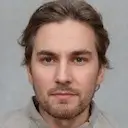Understanding Secondary Market Research for Small and Medium Businesses
Succeeding in business requires more than great products or services. Companies also need to understand what their customers want and where their pain points are. Market research helps organizations stay connected to changing customer needs and adjust strategies accordingly.
While large companies might have the resources for extensive market studies, smaller businesses often cannot afford costly primary research. However, secondary market research offers a smart, affordable way for small and medium enterprises (SMEs) to gather valuable insights without breaking the bank. This guide explains how secondary research works, its benefits and drawbacks, and how services like transcription can streamline the process.
Why Market Research Matters for Businesses
Market research is the organized process of studying available information to draw valid business conclusions. Companies use market research to:
- Test the potential of new products or services
- Understand customer satisfaction and preferences
- Analyze their position versus competitors
- Identify reasons for lost sales or missed opportunities
- Create effective marketing messages and campaigns
Methods include surveys, interviews, focus groups, product testing, and reviewing existing materials. Even if you've never done formal research, activities like customer feedback calls or online polls are part of this process.
Primary vs. Secondary Market Research: What's the Difference?
Primary Market Research
- Involves collecting original data directly from customers or the market
- Methods: surveys, interviews, direct observations, focus groups
- Results are highly specific to your business needs
- Often more accurate due to custom design
- Time-consuming and usually expensive—costs for a detailed survey range from $15,000 to $50,000, while a single focus group can cost $4,000 to $6,000 (Vernon Research, 2018)
Secondary Market Research
- Uses data from studies already conducted by others, such as government agencies, trade groups, or other companies
- Find information in industry journals, market reports, online databases, and more
- Faster and far less expensive than primary research
- Accessibility and breadth—but may lack the exact focus your business needs
For many small businesses, the speed and affordability of secondary research outweighs its drawbacks.
Benefits and Limitations of Each Approach
Key Benefits of Primary Market Research
- Customizable for your business goals
- Greater control over research design and questions
- More likely to yield data specific to your target audience
Main Drawbacks of Primary Market Research
- High cost and time requirements
- Requires specialized research skills
- Long planning and data analysis phase
- Participant recruitment can be challenging
Key Benefits of Secondary Market Research
- Quick access to existing information
- Significant cost savings—some sources are free or require only small fees
- Wide range of sources and data types
- Can provide industry benchmarks and historical perspectives
Main Drawbacks of Secondary Market Research
- Potential lack of specificity for your business situation
- Data may be outdated—studies show most research loses value after 10 years (Alderson, 2008)
- Reliability varies depending on the source
For best results, many companies use a mix of both approaches, relying on affordable secondary research to guide their primary efforts.
How to Make Secondary Market Research Work for You
Small businesses can use secondary market research effectively by following these steps:
1. Plan Ahead
- Define your research objectives and questions
- Identify the specific variables or topics you want to analyze
- Create a framework showing how different factors affect your business
2. Use Multiple Data Sources
- Check your own company's records, customer feedback, and sales reports first
- Expand to external sources such as government reports, trade associations, industry publications, and competitors
- Include both quantitative (numerical) and qualitative (descriptive) data
3. Focus on Recent Studies
- Prioritize reports published within the last five to ten years
- Avoid using information older than ten years unless it supports long-term trends
4. Use Appropriate Technology
- Collecting data from audio or video sources? Use automated transcription services to convert speech into editable text
- For large ongoing research needs, consider an AI transcription subscription to handle regular recordings
Organizing varied data sources becomes easier with technology. If you’re analyzing video interviews or customer calls, turning them into text helps you identify patterns and key points more efficiently.
Where Transcription Fits into Market Research
Transcription plays a key role for both primary and secondary research. When you have large amounts of verbal data—like interviews, focus group recordings, or webinars—it’s much easier to:
- Read, review, and annotate findings
- Share documented insights with your team
- Support your conclusions with accurate references
- Run text analysis or keyword searches
Transcribing your research data turns raw audio or video into shareable content. This makes citations and referencing simpler, improving the credibility of your market research (Smith, 2019).
Combining Primary and Secondary Research
While primary market research delivers precise data, secondary research provides cost savings and speed. Many companies start with secondary sources to build an understanding of the market, then use targeted primary research to fill any gaps.
- To learn about competitors or industry trends: rely on secondary sources
- To understand specific customer opinions about your product: conduct interviews, surveys, or focus groups as primary research
This blended approach is especially useful for small businesses that need reliable data but have limited time or budgets.
Accessible Market Insights with GoTranscript
Analyzing spoken interviews, webinars, customer calls, and video content is challenging unless you have accurate, easy-to-read transcripts. GoTranscript’s transcription services can quickly turn your recordings into ready-to-analyze text, speeding up the research process and eliminating manual effort.
For those working with large volumes of audio or video, GoTranscript offers:
- Automated transcription for rapid results
- Subscription options for regular research needs with our AI transcription subscription
- Quality control through transcription proofreading services
Take your research further with GoTranscript’s closed caption, subtitling, and text translation services. Ready to streamline your next market study? Order transcription or order captions online in minutes with transparent pricing.
Unlock the power of secondary market research and move your business forward—with GoTranscript as your partner for accurate, actionable market insights.



















 Verified Order
Verified Order